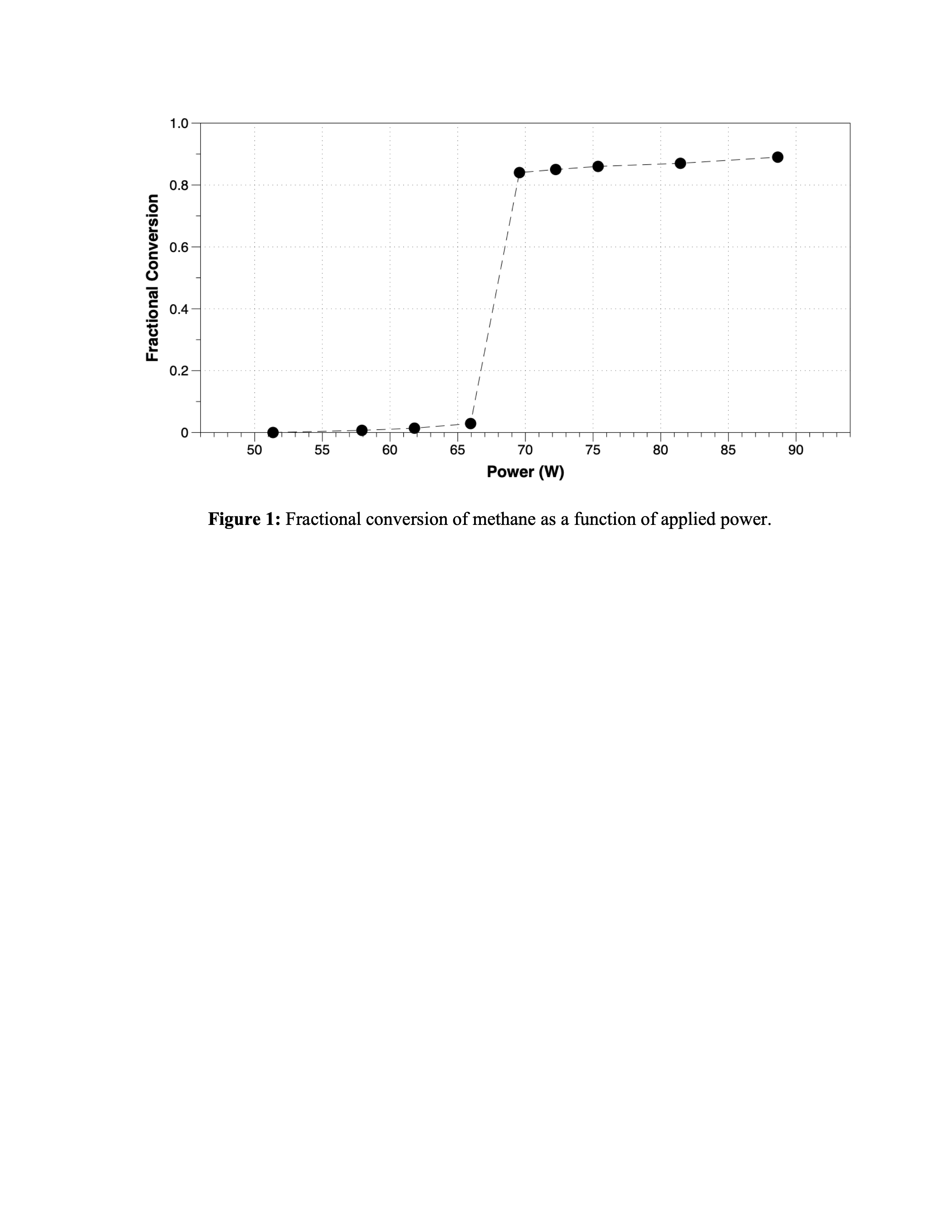2023 AIChE Annual Meeting
(222g) Feasibility Study on the Resistive Heating of Catalytic Fecral Wire for Steam Methane Reforming
Authors
This study examines a potential decarbonization solution: electrification of SMR. We use a bench-scale electrified reformer that uses resistive heating as the heat source by applying direct electric current through a coiled high-resistance FeCrAl metal wire. The metal coils (0.5-mm o.d.; 40 cm in length; 3.13 ohm resistance) used were uncoated or coated with a Ni/zirconia catalyst. A feed stream comprised of steam and methane (4:1 molar ratio) and nitrogen at 190°C and 1 atm flows into a stainless-steel tube (45 mm i.d.) that houses the wire. The feed perpendicularly encounters the electrically-heated wire 100 mm downstream. Experiments are conducted at power settings in the range 50-90 W, corresponding to an estimated wire temperature range of 650-850°C. After condensing unreacted steam from the effluent exiting the reformer, FTIR analysis is used to detect and quantify for CO, CO2, and CH4.
Results for the coated coil showed that power settings below 66 W yield low conversions (< 3.0%). However, for power greater than 66 W, an unusual step change in conversion occurred â 84% at 70 W increasing to 89% at 89 W. The ratio of CO to CO2 increased from 0.77 at 58 W to 1.7 at 89 W. Experiments with the uncoated coil exhibited insignificant conversions (< 0.5%) between 50-90 W. This clearly demonstrated that the high conversions obtained were due to the catalytic activity of the coating. Though H2 was not measured directly, we computed H2 generation from the conversion, CO/CO2 composition, and SMR chemistry â at the highest conversion, we obtained a value of 0.16 mol of H2 generated per mol of feed mixture. This corresponds to USD 93 per kg H2.
Our results show that under the experimental conditions examined in our study, electrification of SMR, albeit expensive in terms of H2 production cost, is possible with high conversions. This will have significant relevance to the hydrogen generation sector as it makes attempts to reduce its carbon footprint. Further studies are ongoing to investigate ways to reduce the H2 production cost and to gain an understanding of the step change behavior in conversion.
